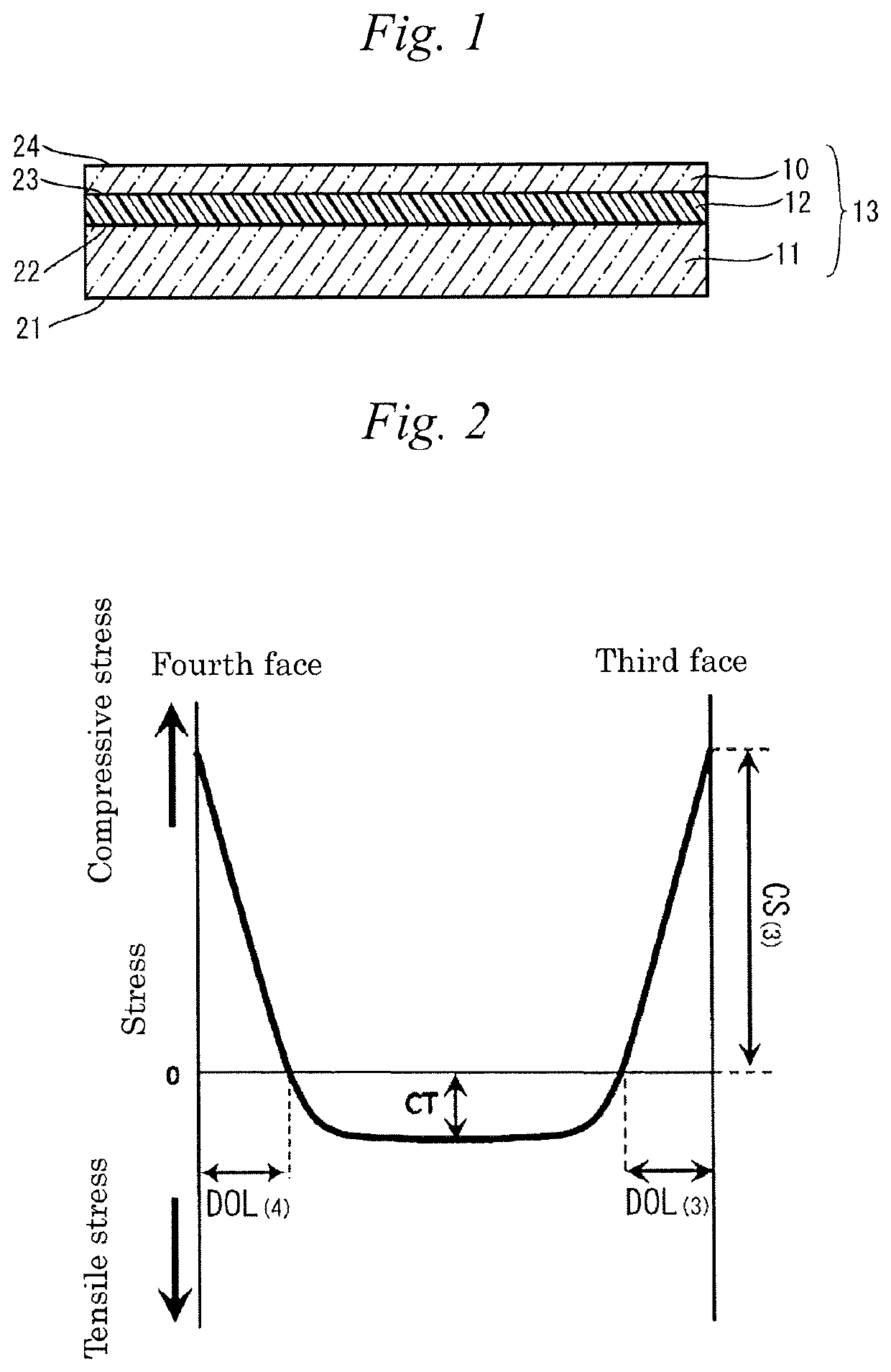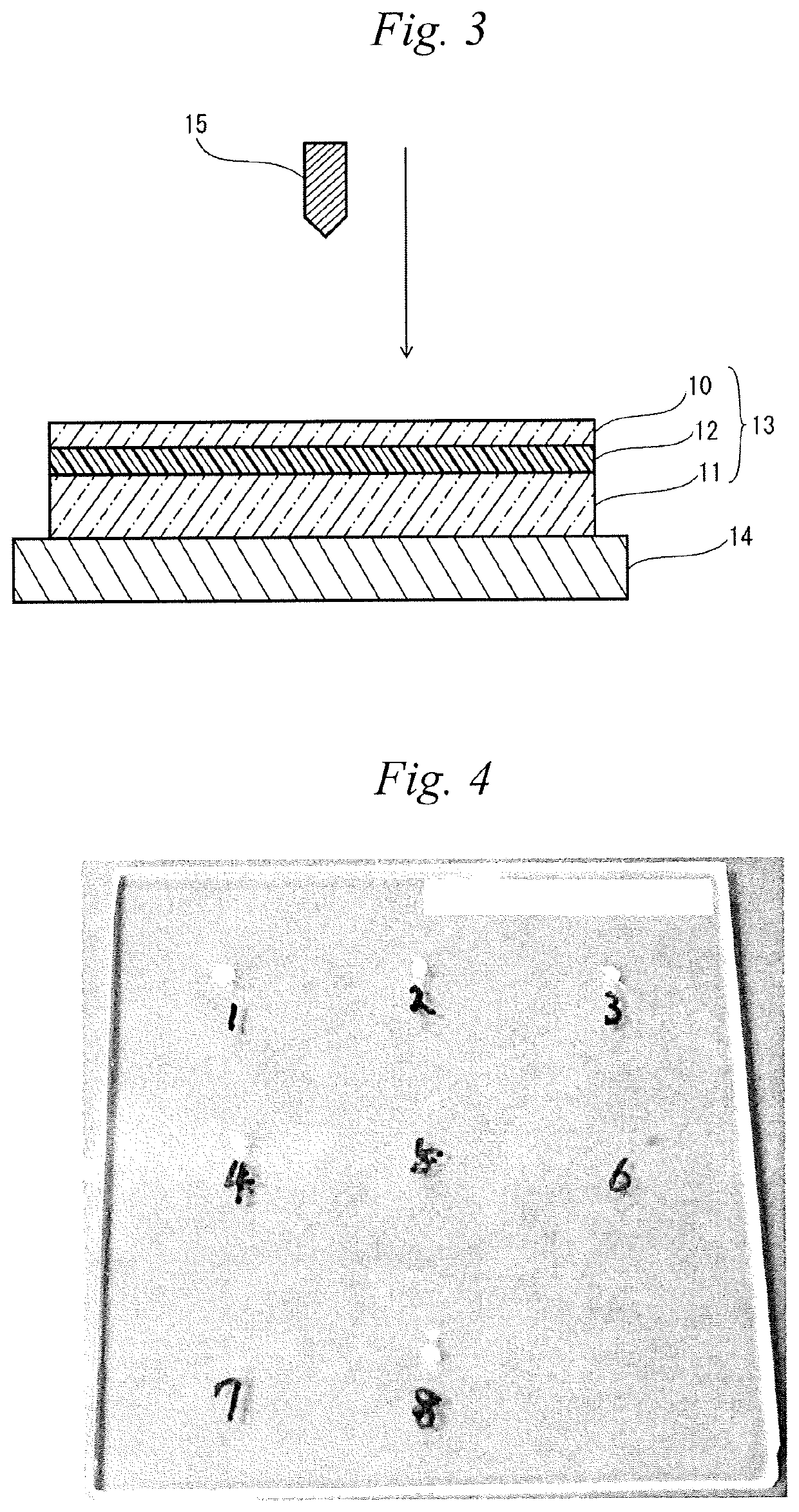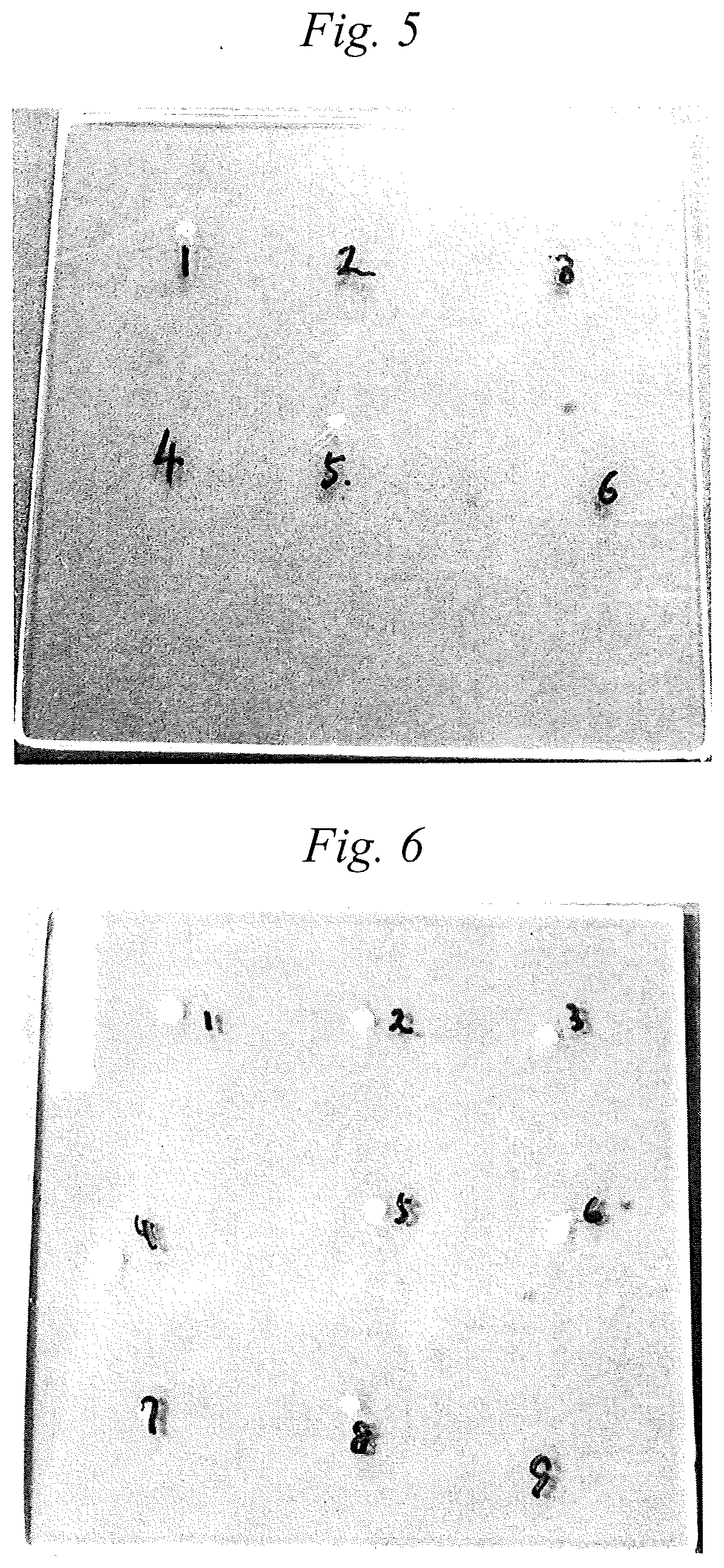Laminated glass
a technology of laminated glass and glass plate, applied in the field of laminated glass, can solve the problems of glass plate breakage and difficulty in visually identifying objects such as landscapes, and achieve the effect of effective surface scratches
- Summary
- Abstract
- Description
- Claims
- Application Information
AI Technical Summary
Benefits of technology
Problems solved by technology
Method used
Image
Examples
first embodiment
[0026]FIG. 1 is a cross-sectional view showing schematically the structure of a laminated glass 13 according to an embodiment of the present invention. As shown in FIG. 1, the laminated glass 13 according to an embodiment of the present invention is structured to include a first glass plate 11, a second glass plate 10 and an intermediate layer 12 provided between the first glass plate 11 and the second glass plate 10.
[0027]The first glass plate 11 has a first face 21 and a second face 22 opposing the first face 21. And the second glass plate 10 has a third face 23 and a fourth face 24 opposing the third face 23. The intermediate layer 12 is provided between the second face 22 of the first glass plate 11 and the third face 23 of the second glass plate 10, and bonds both the glass plates. In other words, the second face 22 and the third face 23 are bonding faces, and the first face 21 and the fourth face 25 are exposed faces.
[0028]Incidentally, in this embodiment, the first face 21 is...
examples
[0125]The present invention is described in detail below by reference to Examples, but the present invention should not be construed as being limited to these Examples.
(1) Production of Second Glass Plate
[0126]Glass produced by a float process for use in chemical strengthening was cut and divided, and then ground with a #1000 grindstone into glass plates having thicknesses shown in Table 1. Thereafter, the glass plates were subjected to ion exchange treatment by using potassium nitrate under the conditions set forth in Table 1, and then physical properties of the thus obtained chemically-strengthened glass plates were evaluated. As to the glass compositions, those within the range of (i) and (ii) among the compositions exemplified hereinbefore were used.
[0127]The surface compressive stress (CS) and the depth of compressive stress (DOL) were measured with a glass surface stress meter (FSM-6000LE, manufactured by ORIHARA INDUSTRIAL CO., LTD.). Additionally, the tensile stress (CT) was...
PUM
| Property | Measurement | Unit |
|---|---|---|
| thickness | aaaaa | aaaaa |
| thickness | aaaaa | aaaaa |
| thickness | aaaaa | aaaaa |
Abstract
Description
Claims
Application Information
 Login to View More
Login to View More - R&D
- Intellectual Property
- Life Sciences
- Materials
- Tech Scout
- Unparalleled Data Quality
- Higher Quality Content
- 60% Fewer Hallucinations
Browse by: Latest US Patents, China's latest patents, Technical Efficacy Thesaurus, Application Domain, Technology Topic, Popular Technical Reports.
© 2025 PatSnap. All rights reserved.Legal|Privacy policy|Modern Slavery Act Transparency Statement|Sitemap|About US| Contact US: help@patsnap.com



